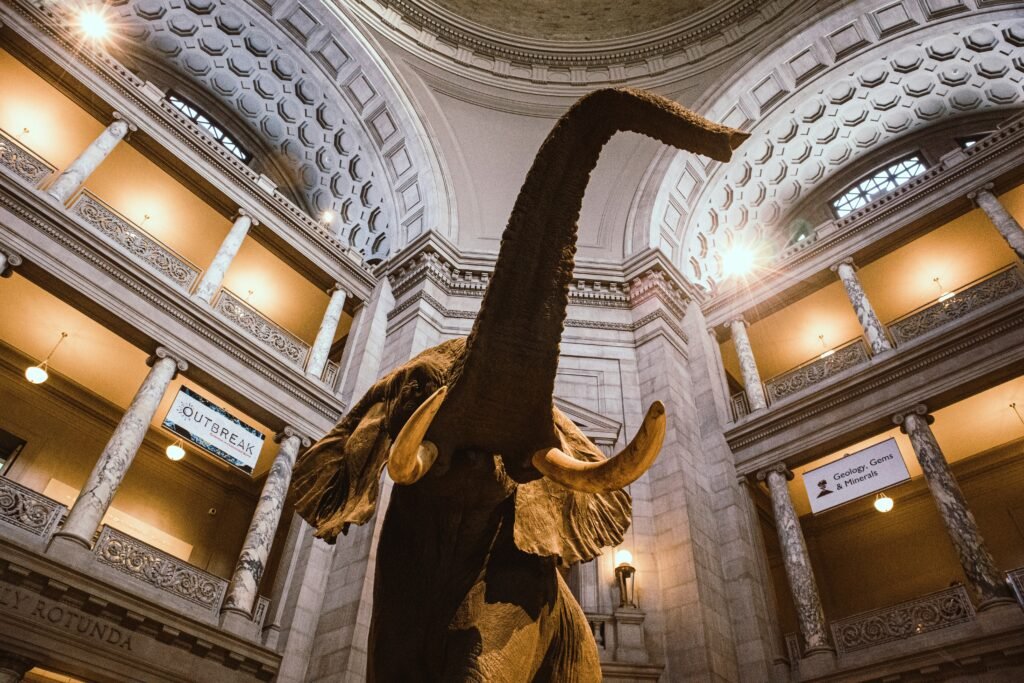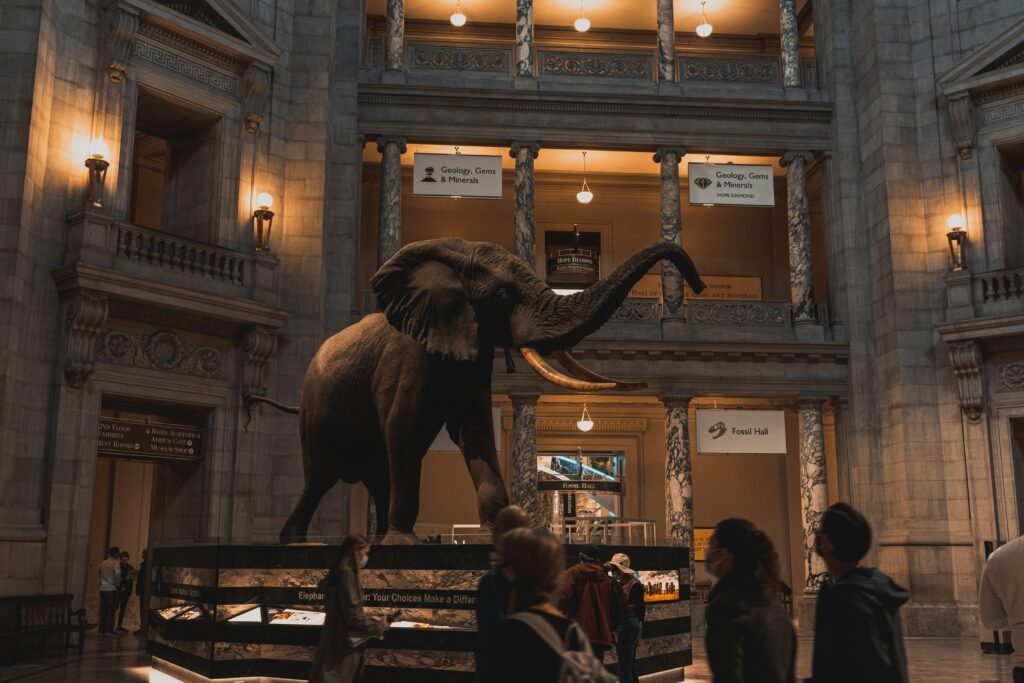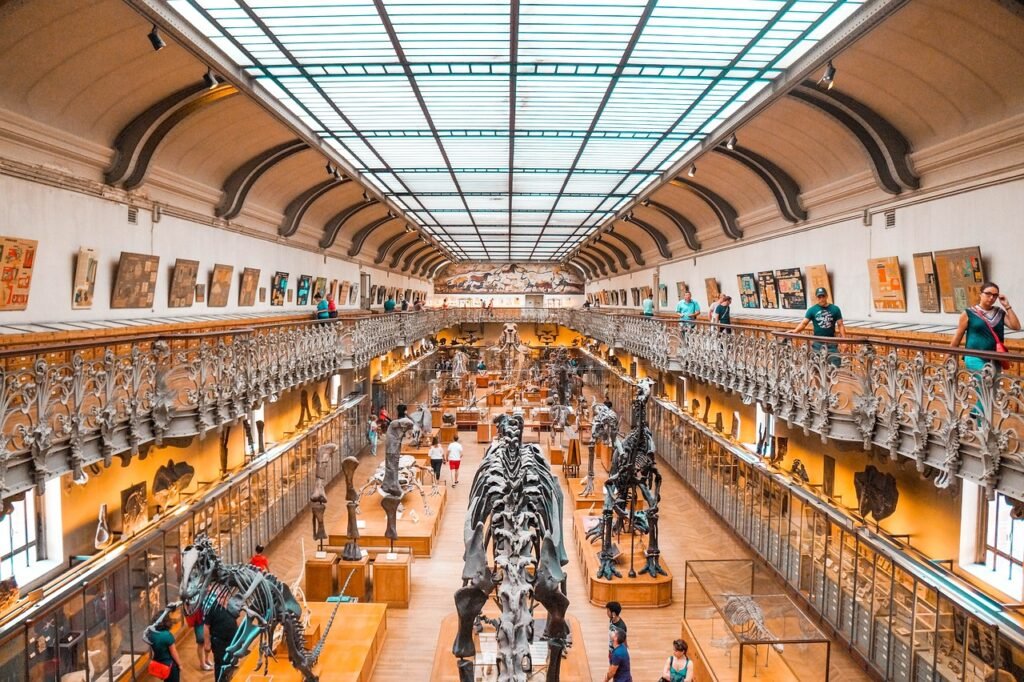A Brief History of the Museum
The Smithsonian National Museum of Natural History is part of the Smithsonian Institution, founded by James Smithson in 1846. The museum opened in 1910, offering visitors a wide range of natural history exhibits that still attract millions from around the world.
In 1911, the museum introduced the Hall of Fossils, featuring remarkable dinosaur skeletons and emphasizing paleontology. In 2008, the Sant Ocean Hall was added, showcasing marine ecosystems and raising awareness about ocean conservation. These expansions allowed the museum to grow with scientific advances and adapt to public interests.
Joseph Henry, the first Smithsonian Secretary, championed scientific research and education, while Spencer Fullerton Baird, the second Secretary, expanded collections in zoology and anthropology. Their efforts helped shape the museum into a world-class institution.
Today, the Smithsonian National Museum of Natural History stands as a leader in education and research. It continues to inspire curiosity about the planet’s biodiversity, playing a key role in scientific discovery.
Exhibits and Collections






The Smithsonian National Museum of Natural History draws millions of visitors each year with its impressive exhibits. One of the standout displays is the Hall of Fossils, where visitors can admire dinosaur skeletons and learn about Earth’s prehistoric past. This exhibit showcases the significance of paleontology in understanding ancient life.
The museum also features the famous Hope Diamond in the Gem Hall. This stunning gem, known for its size, color, and intriguing history, is a highlight of the museum’s extensive mineral collection. It demonstrates the planet’s geological diversity and beauty.
With over 145 million specimens, the museum covers fields like paleontology, anthropology, and ecology. These collections are vital for scientific research, helping to preserve Earth’s biodiversity and advance knowledge. The vast array of specimens provides insights into life’s evolution and the connections within ecosystems.
In addition to permanent exhibits, the museum offers temporary exhibitions on current scientific and cultural topics. This mix of rotating and permanent displays creates an engaging learning experience, encouraging a deeper understanding of the natural world.
The Smithsonian National Museum of Natural History plays a crucial role in making scientific knowledge and cultural heritage accessible to the public.
Educational Programs and Research
The Smithsonian National Museum of Natural History offers more than just exhibits—it’s a center for education and research. The museum hosts programs for all ages, ensuring that everyone can connect with the natural sciences. Workshops for children, families, and adults allow visitors to explore topics like geology, paleontology, and conservation through hands-on activities. Expert-led lectures dive deeper into current scientific issues, fostering a culture of curiosity and learning.
Family-friendly activities make it easy for parents and kids to learn together. Special events, such as themed weekends and seasonal programs, create exciting ways to experience science. These activities often tie into the museum’s ongoing research, showing its dedication to public education and inspiring future scientists and environmental advocates.
The museum’s research initiatives are equally vital. Smithsonian scientists work on important projects related to biodiversity conservation and climate change. By partnering with academic institutions and conservation organizations, the museum helps advance global knowledge on these critical issues. This research also strengthens educational programs, offering resources that inform the public about today’s environmental challenges.
Through its blend of education and groundbreaking research, the Smithsonian National Museum of Natural History plays a key role in inspiring curiosity and promoting scientific understanding.
Visitor Experience and Accessibility
The Smithsonian National Museum of Natural History offers a rich experience for all visitors. Open daily from 10 a.m. to 5:30 p.m. with free admission, it’s an accessible destination for families and individuals to explore its vast collection. Exhibits range from dinosaur fossils to the diversity of living organisms, ensuring a captivating visit.
To enhance the experience, the museum offers amenities like cafés for refreshments and a gift shop with unique souvenirs. Special events and guided tours are also available, providing deeper insights into specific topics. It’s best to plan ahead, as some tours require reservations.
The museum is dedicated to accessibility. Wheelchair-accessible entrances, elevators, and free wheelchair rentals are available on a first-come, first-served basis. The museum also supports guests with visual or hearing impairments by offering audio descriptions and sensory-friendly materials. Clearly marked accessible routes ensure easy navigation for those with mobility challenges.
A visit to the Smithsonian National Museum of Natural History promises an engaging and inclusive experience for everyone. um. Service animals are permitted, and additional assistance can be requested at information desks. Overall, the Smithsonian National Museum of Natural History strives to create an inclusive environment, ensuring that every visitor has the opportunity to engage with the wonders of natural history comfortably and meaningfully.






